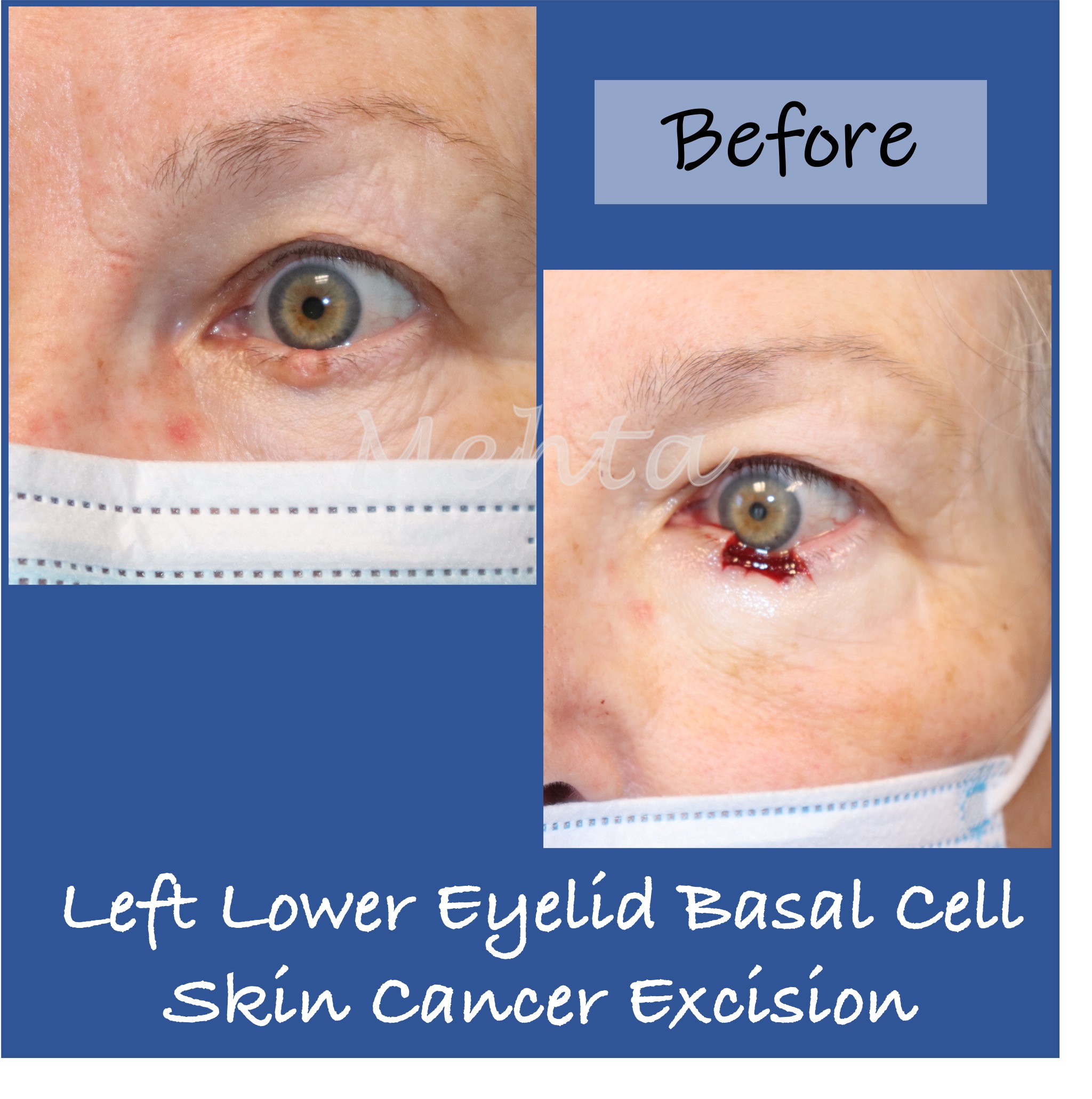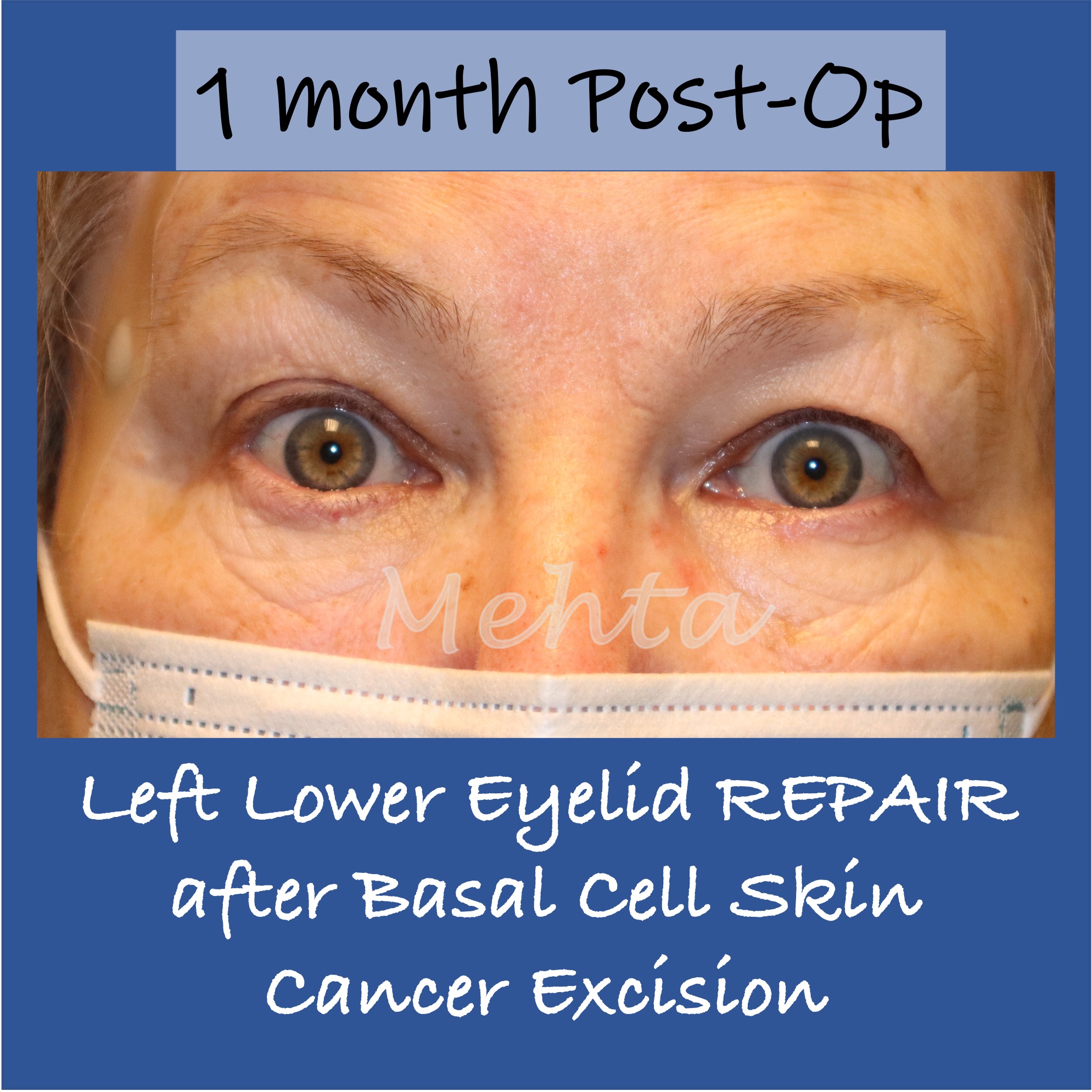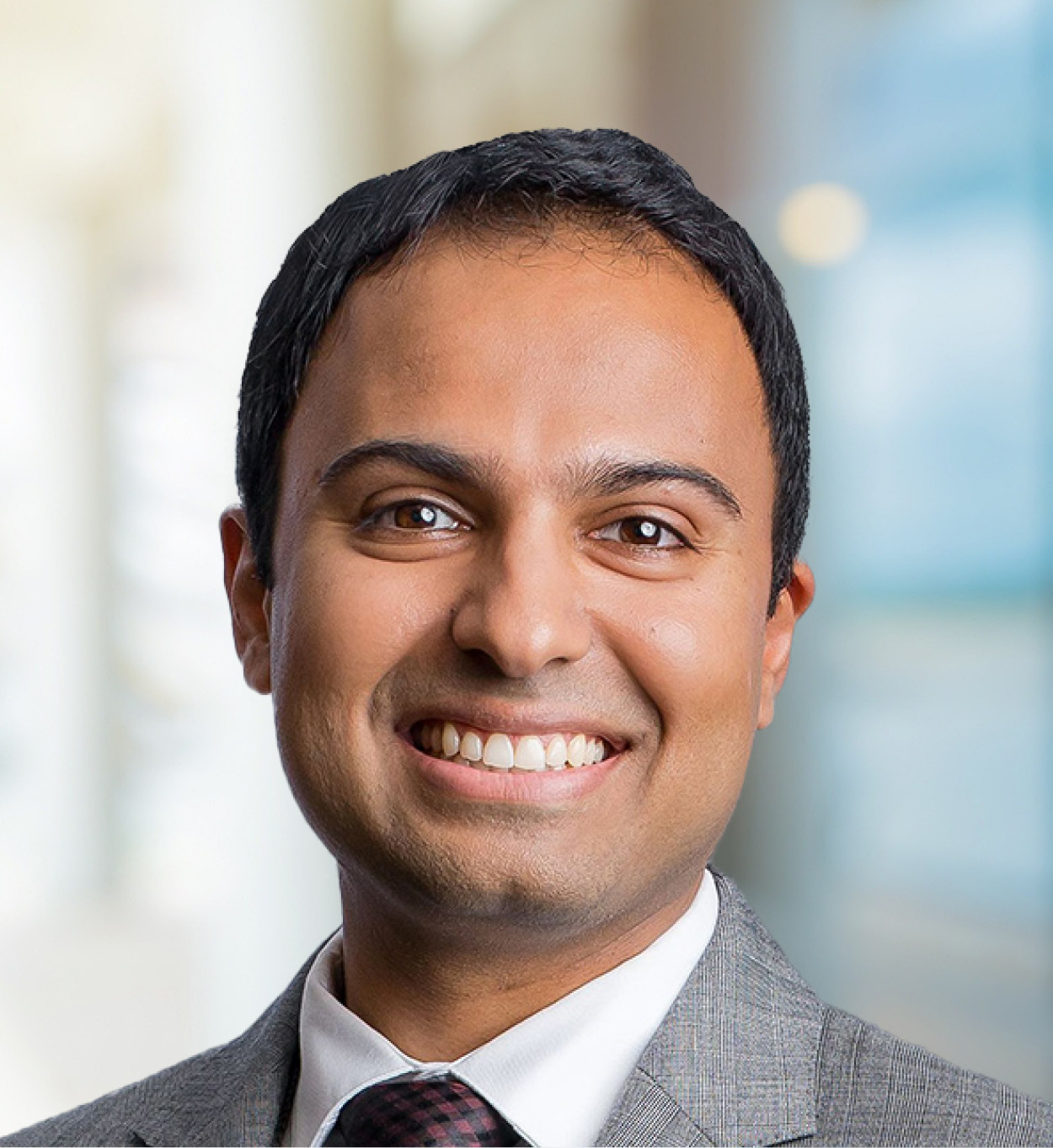Eyelid Cancer Reconstruction
Eyelid cancers are usually painless, but can slowly grow and destroy the normal architecture of the lid. They are typically raised and slowly grow, can be light or dark in color, can cause loss of eyelashes, ulcerate and sometimes bleed. Early detection is critical before the damage becomes devastating. Proper excision and meticulous repair ensures eyelid function remains intact. It is important to have any suspicious lesion on or around the eyelid evaluated by an oculoplastic surgeon. If a biopsy proves cancerous, typically Dr. Mehta recommends excision of the cancer so the margins around it are clear. This is followed by reconstruction of the eyelid to achieve proper function and aesthetics. Often Dr. Mehta works with Mohs surgeons, specialized dermatologists who remove skin cancers by carefully clearing the margins, followed by his surgical repair of the area. This will be discussed at length at the consultation so that all questions are answered and a thorough understanding is achieved.


Eyelid Malpositions (Lower lids that turn in or out)
Entropion (Eyelid Turns Inward)
Entropion, a condition in which the lower eyelid turns inward, can cause eye irritation and result in excessive tearing, crusting, mucous discharge and even vision loss. Although most commonly the result of aging and the weakening of the eyelid muscles, entropion may also be caused by a birth defect, eye injury, scarring or tumors.
Patients whose eyelids turn inward can undergo an outpatient surgical procedure to tighten the eyelid and return it to its normal position. For those cases where surgery is not an option, the condition is treated with lubricating drops, ointments and temporary sutures. Since entropion can cause damage to the outer part of the eye, known as the cornea, we strongly suggest an evaluation with our oculoplastic surgeon, Dr. Mehta.
Ectropion (Eyelid Turns Outward)
Ectropion, a condition in which the lower eyelid turns outward, can cause eye irritation and result in excessive tearing, crusting and mucous discharge. Although most commonly the result of aging and the weakening of the eyelid muscles, ectropion may also be caused by a birth defect, eye injury, scarring or skin cancers. An outpatient surgical procedure can be performed to tighten the eyelid and return it to its normal position. To prevent dryness of the cornea, artificial tears and ointments may be prescribed to help keep the eyes lubricated. Since ectropion can cause damage to the outer part of the eye, known as the cornea, we strongly suggest an evaluation with our oculoplastic surgeon, Dr. Mehta.
Thyroid Eye Disease
Thyroid eye disease usually occurs as a result of Graves disease, or hyperthyroidism, but it can also affect hypothyroid or euthyroid patients. Infiltration of the muscles and tissues surrounding the eye can cause poor eye movement, proptosis (bulging of the eyes), malpositioned eyelids and sometimes vision loss. The most common sign of thyroid eye disease is eyelid retraction. Management of patients with this disease is often multidisciplinary and includes endocrinologists, internists, strabismus surgeons, ophthalmologists and oculoplastic surgeons. Patients experiencing severe sight-threatening progression of the disease often require high-dose steroid treatment, radiation therapy or surgery to decompress the eye and preserve sight. Patients may also require surgery to straighten the muscles that move the eye and eyelid. A new medication, TEPEZZA®, is now available to improve the signs and symptoms of Thyroid Eye Disease.
Orbital Fractures and Trauma
Orbital trauma to the eyelids and bony orbits often results from car accidents, sports or blunt force injuries. Such trauma may require surgical repair by an oculoplastic surgeon for optimal functional and aesthetic results. Restoring the bony orbit around the eye is important for eye positioning and vision. Scar tissue from injury or surgery may be unsightly or deform the eyelids. Scarring can cause poor function and closure of the eyelid, notching of the eyelid margin, drooping eyelids, misdirected lashes and irritation to the eye.
Orbital Tumors
Some cancers in other parts of the body can spread to the orbit, the area behind the eye. Primarily, orbital tumors can occur behind the eyes and can be malignant or benign. Often, patients will present with a bulging eye, a palpable mass, pain or double vision. Radiologic imaging is necessary to help identity the type of tumor and surgical excision can be performed. Depending on the tumor, sometimes a referral to a tertiary care university is indicated.




 Washington Eye Specialists
Washington Eye Specialists 
